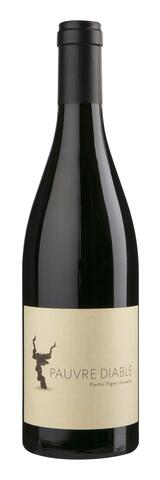Grenache Noir de France
Wines color
Taste profile
Sweetness
Body
Acidity
Tannins
Alcohol
Table of contents
Wines produced
Occasions
Wine pairing
Grenache de France is an extremely full-bodied Mediterranean wine, full of sunlight. It goes flawlessly with pork – which is itself smooth and aromatic – as well as grilled or roasted lamb, and poultry in sauce. It is best served with soft-textured meats rather than those that are more fibrous.
Main food pairings:
- Raw or grilled Fish and Seafood
- Fish Pasta and Risotto
- Couscous and Middle Eastern Cuisine
- Paella and Tapas
Aperitif ideas
Medal winners
Encyclopedia
Origin
Grenache Noir is a variety of Spanish origin (“Garnacha Tinta”), more precisely from the region of Aragon. During the Middle Ages, the domination of Aragon and the expansion of this kingdom towards the southwestern Mediterranean plain, the southeastern littoral and Sardinia led the Grenache Noir variety to migrate to the French shores of the Mediterranean, where it has become the standard variety for producing the white wines of this region.
Aromas
Grenache Noir's typical varietal aroma is sweet black cherry. In addition to this sweet, luscious note, we can easily find hints of dry fig, tobacco, mocha and white pepper. Licorice, tar, black olive and notes of garrigue often round out Grenache Noir's powerful, diverse range of aromas.
Wines profile
Grenache Noir’s potential for accumulating sugar is high but its color declines quickly when yields are higher. It is generally low in acid, and possesses a noteworthy smoothness. Wines made with Grenache Noir are thus very full bodied. The two main characteristics of this variety are power and body, which give the wines a round, mellow tannin structure. Grenache Noir’s alcohol potential also enables it to make high quality sweet wines if the grape is planted in very good terroirs, if yield is kept low and if the color is highly concentrated.
Cultivation areas
Grenache Noir is a Mediterranean variety and in France is found exclusively on the Mediterranean coast, from the Spanish border in the southwest to Fréjus in the southeast, as well as in Corsica. Outside of the Mediterranean climate, it is unable to ripen. Production of Grenache Noir is constantly increasing.
Precocity
Grenache Noir buds relatively early, just 6 days after Chasselas, the benchmark, but ripens much later. Grenache Noir ripens 4 weeks after Chasselas, making it a Period IV grape variety.
Vigor
Grenache Noir, well known for the power of its jagged vine stocks, is a highly vigorous, upright-growing variety that resists well against the violent winds of France's Mediterranean coast, the Mistral and the Tramontane. It should be pruned short, often head-pruned or cordon-pruned. Grenache Noir gives its best results at low yields, which is often the case in Mediterranean areas, where dryness and poor soils naturally curb productivity. This variety has a very high potential for accumulating sugars, but its color drops quickly when yields increase. Its acidity is generally low. The alcohol potential of Grenache Noir also enables it to be used for excellent natural sweet wines (vins doux naturels) as long as it is planted in high-quality terroirs and yield is perfectly controlled.
Soils
Grenache Noir is well adapted to slightly acidic, gravelly, stony, hot soils that reflect the sunlight, giving it a long ripening period. Soils with high limestone content and low pH suit this variety less.
Climat
This is a very late ripening variety, making it suitable only for strictly Mediterranean areas, where sunny weather and accumulated heat are guaranteed for a long period, particularly during the ripening period. When continental or oceanic influences are felt, Grenache Noir does not ripen as well. For this reason, in France it is found exclusively on the Mediterranean coast, a windy area where there is little gray mold, which Grenache Noir is highly susceptible to.
Susceptibility to diseases and pests
Grenache Noir is highly susceptible to mildew and dead arm disease, and quite susceptible to bacterial necrosis, gray mold and grape berry moths. However, it is not susceptible to mites and, when not grafted, resist well against root-knot nematodes in the sands of the Camargue littoral.
Use
Grenache Noir is used only to produce wine.
Descriptive elements
Young Grenache Noir leaves are a beautiful shiny green, while its vine shoots are yellow. Grenache Noir's shoots have green internodes, and the tips of the shoots have sparse flat-lying hairs. Its adult leaves have teeth with rectilinear sides, no anthocyanic pigmentation of the petioles and veins, and a leaf blade that is smooth-surfaced and very jagged. Its underside has very few to no flat-lying or upright hairs. Grenache Noir's clusters are medium to large, and its berries are medium-sized.
Clonal selection in France
The twenty-two approved Grenache Noir clones (specifically named Grenache N) are numbers 70, 134, 135, 136, 137,139, 224, 287, 362, 363, 432, 433, 434, 435, 513, 514, 515, 516, 517, 814, 1064 and 1065. A conservatory of more than 360 clones was set up in the Côtes du Rhône in 1998.
Map of France
Grenache originally comes from Spain, but France is, by far, the world’s leading producer of this Mediterranean grape variety. Grenache de France lends wines great freshness, giving them depth and accentuating their fruitiness.









